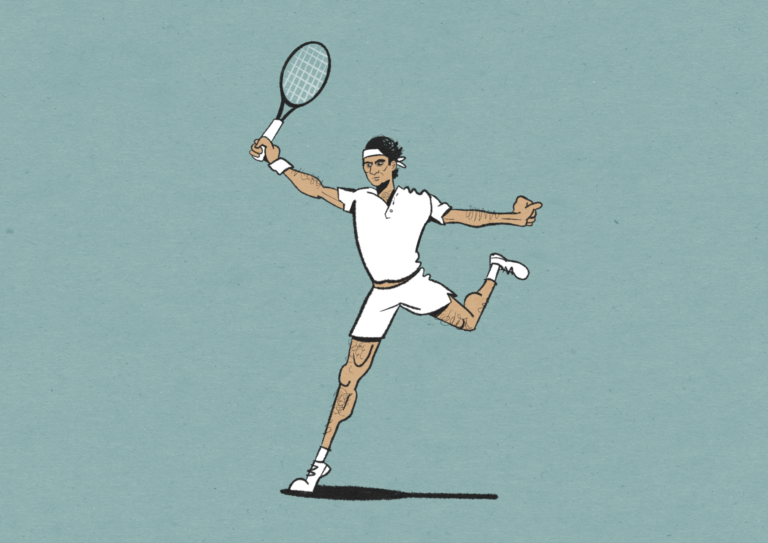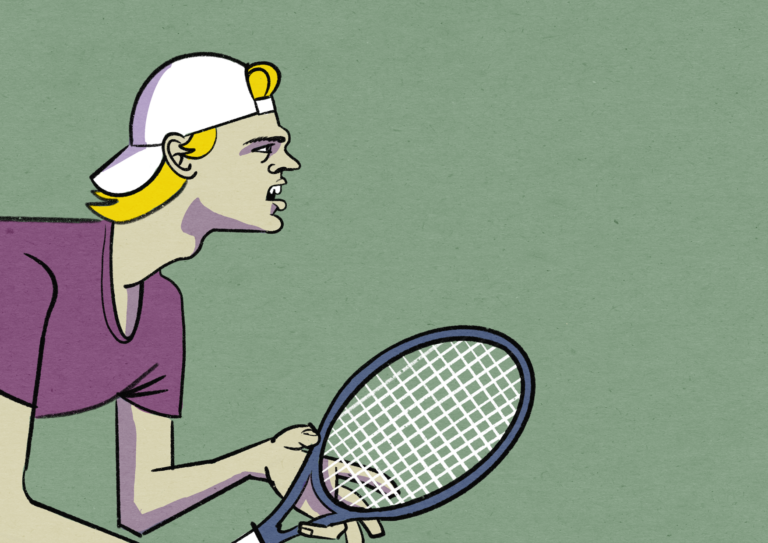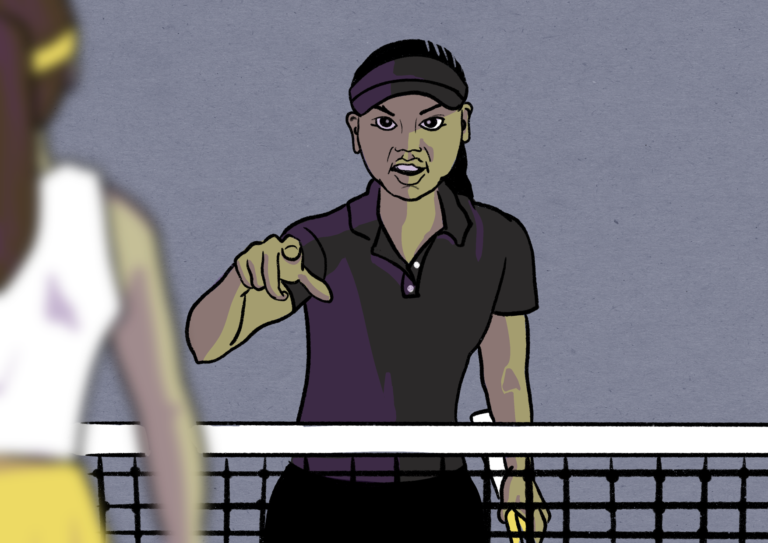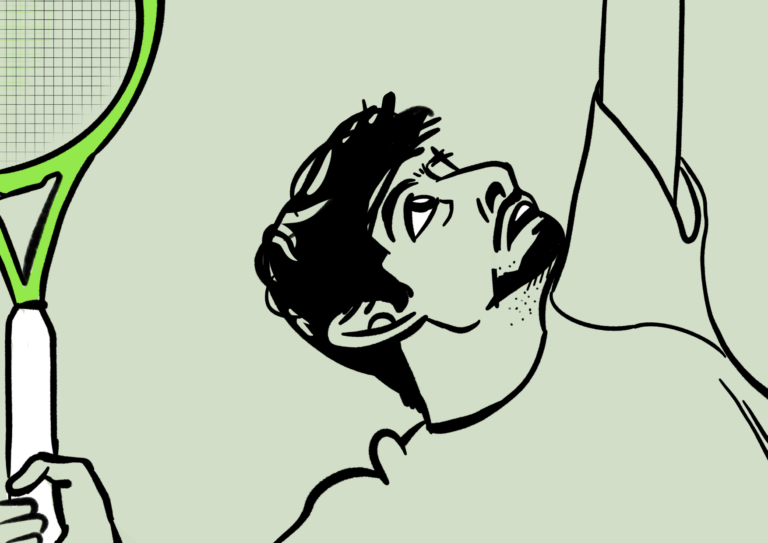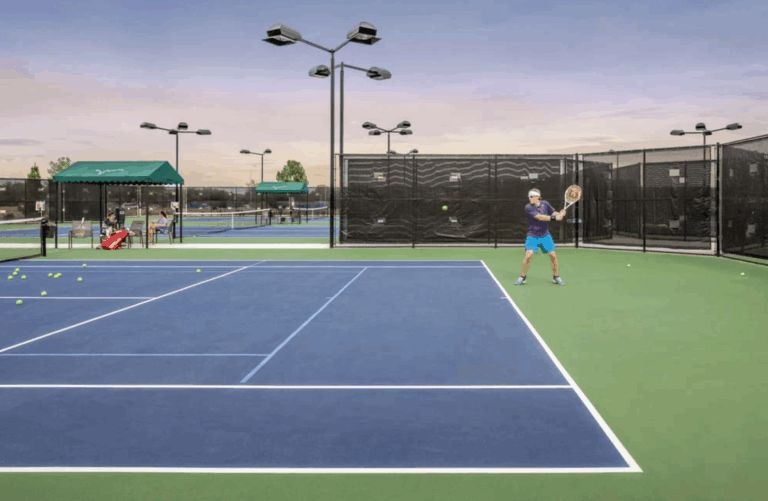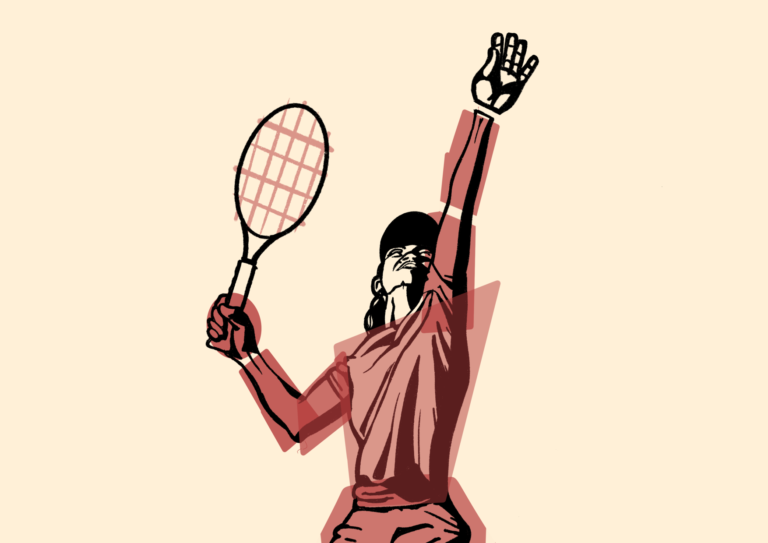7 Tips for Beginner Tennis Players
Tennis can feel intimidating when you are starting out. When you watch the pros make it look so effortless, it can feel demoralizing not being able to come close to that level. Rest assured, if you build the right habits and technique, tennis can be a sport that grows with you. The difference between tennis beginners that end up playing their whole lives and those that have racquets collecting dust in their garage, is investing in the sport.
This doesn’t mean spending excessive amounts of money–it means developing a solid foundation, and keeping yourself motivated. In order to avoid getting frustrated, try to learn ways to consistently improve. This includes everything from really small tweaks to focusing on aspects that improve your tennis game without a racquet.

1. Learn how to hold your racquet
How to hold a tennis racquet can be a complicated step for beginners. Is it different for different strokes? What do you do if it does not feel comfortable? What about holding the racquet for serving? Volleying? All of these questions can lead to confusion in your game. Especially when you have to make decisions on the spot. Instead of stressing about how you should hold the racquet, learn these little tips to make you more confident on the court.
Eastern Grip
Eastern forehand grip is probably the most natural way to grab a racquet. Imagine somebody asked you to pick up a drink. How would you grab it? This can be a useful way to think about this grip.
- Eastern grip allows you to hit more aggressive groundstrokes
- Increases power from the baseline
- For beginners, this grip often feels the natural way to hold the racquet
Continental Grip
The most popular grip for volleys and serves, this grip might take more getting used to. This grip lets you hit forehand and backhand volleys without changing your grip. To try and grab the racquet here, let’s imagine the racquet perpendicular to the ground with the frame facing upwards. Think of the butt cup of the racquet as a clock, you want your hand to come over the racquet at about 11 and 1 o’ clock.
- Versatile: Serves, volleys, slices, and overheads— all without changing grip
- Good at the net: Offers stability and precision on shorter, quicker shots like volleys
- Spin: Slice and topspin on serves, and slice and topspin for groundstrokes— again, without changing grip
2. Mini Tennis Warm-Up
When beginners start playing, it can be tempting to immediately start rallying from the baseline. Starting with a mini tennis warm-up can improve your hand-eye coordination, technique, confidence, and control.
- You and your partner can start out from the service line and choose one box, ad or deuce side
- Keep a small rally going for as long you can, really working on top spin
- By doing mini ground strokes, you can zero in on technique and “brushing up on the ball”
- Doing this warm-up will help you get your rhythm down before hitting from the baseline.
Want to make your warm-up even longer? From the service line, play “volley-volley” with your partner. This version of mini tennis lets you practice more control and work on your volley.
- Feed the ball, and volley back-and-forth for as long as you can.
- This version of mini tennis zeroes in on the complexity of the volley
- Turn this into a game and play first to 11
Once you groundstroke mini-tennis and then volley-volley, take it back to the baseline! Your strokes will feel less shaky and more solid.
3. Use proper tennis gear
The gear requirement can be intimidating for beginners, especially when it comes to cost. What is the best racquet to get? How many balls do you need? Are these shoes right? Sometimes it can be difficult to parse through the answers because everyone has their own opinion. There are however, some things that you have to have starting out:
- Tennis Racquet
- Tennis Balls
- Overgrips
- Tennis Shoes
Racquet
While obvious, it’s important to understand your specific racquet needs. Not all racquets are the same, so if you are going to buy your first racquet be aware of the racquet care and longevity as well as the differences. Not sure what size, height, or weight to begin with? If you go to a tennis or sporting goods store, they can usually help you decide. For example, if you’re a young junior girl starting out, the weight of your racquet might be very different from that of a bigger, taller individual.
If you have started taking lessons, your coach should be able to help you and offer recommendations as well. If you belong to a country or tennis club, typically they have racquets that you can “demo”. This way, you can get some experience playing with different kinds of racquets before having to purchase one.
Cans of balls
Knowing how many balls to have as a beginner can be really confusing. If you take lessons, you are not expected to bring a basket of balls, but if you are going to play with a group or a friend, the etiquette is different. Typically, if you are playing with a partner or in a group, you might alternate who brings a can of balls each time you play. If you have a big group, there might be a schedule detailing who should bring a new can that week. As such, make sure you have a couple cans on hand!
Overgrips
The grip on a racquet when you buy it is not intended to be utilized every single time you play. As you start playing more often, the grip may get sweaty and start to tear. A worn grip will affect your performance. Worn grips slip, are less comfortable, and make it difficult to maintain a strong grip.
You should be able to get a pack of 3-6 overgrips from any sporting store or online. If you notice that you’re sweatier than most players, there are specially designated grips that work for sweaty hands. Below are some of the most popular grips:
- Yonex Super Grabs
- Tourna Grip
- Wilson Pro Comfort
- Head Xtreme Soft
- Gamma Supreme Overgrip
Tennis Shoes
Beginners playing tennis in running shoes is a common scene. Depending on what kind of court you are playing on, this is fine for a while, but if you are able to invest in tennis shoes, do it. There are numerous differences between tennis shoes and normal sneakers or running shoes.
- Overall design of tennis shoes are for change of direction and side to side movements
- Reinforced toe and sole for drag protection.
- Enhanced durability overall
- Less cushioning than running shoes
4. Focus on fitness
Even though it might look easy on TV, tennis is a physically demanding sport. Think about all the sprinting and agility required. Forward, back, left, and right, jump, lung. There are all the movements. If you don’t have a great fitness baseline you will be able to build it up through just playing but you will be limited on the court. Here are some supplemental activities you can do to enhance your tennis experience.
Jump Rope
A lot of tennis players jump rope to build endurance while simultaneously working on footwork. You don’t have to do anything fancy either. If you feel as though your fitness is lacking, try doing 20 seconds straight jumping rope, 10 seconds off. Do this for five minutes. When you feel up for it, try to build up to 10. Jumping rope is a prime fitness exercise because it activates many muscle groups simultaneously and elevates your heart rate.
Lifting Weights
Needless to say, having a higher muscle percentage helps in tennis for strength and control. Strength training can be intimidating, especially if you don’t like going to the gym. An easy way to ease into strength training is through free weights. If you start using free weights with your arms, and doing small routines that take no more than 5-10 minutes. Finding the best starting weight is different for every person, but a couple arm exercises that work with free weights are arm circles, bicep curls, and tricep extensions.
Cardio
Tennis does require a solid level of cardiovascular capability. By doing minimal cardio training, whether it is interval sprinting on a treadmill, or something more fun like barre or zumba, you will notice that it is easier to get to those hard-to-reach balls while playing. You don’t have to belong to a gym to get in a good cardio workout. Find a local track and do mini sprints, or if sprinting is hard on your knees, do walking and jogging. Find something fun that works for you!
5. Learn from the pros
Even though the pros are way beyond the beginner level, learning from them can help build solid habits. If you have a free 10 minutes, go to YouTube and search one of your favorite tennis stars and watch their serve, forehand, backhand, etc. When you find a video, slow down the speed and focus on their technique. In your living room, garage, basement, yard, or whatever space you can find, get your racquet out and practice to the rhythm of the pros. If you can slow their stroke down and see the specific elements, this can be extremely beneficial.
This is not only useful for seeing technique but also for understanding how to navigate the court. How should you move during a point? What patterns do players use? Should you try and hit a drop shot? Should you hit the ball as deep as possible? All of these mental questions can make it tough to play during a match. On YouTube or on TV, pull up tournament videos from your favorite pro and watch where they move during a point. Take note of where they go after they serve, where they move after they hit a deep shot, or which side of the court they challenge their opponent on. Even if the pros are on a completely different level, watching them in action can provide some really helpful insight into the game.
6. Recover to the middle of the court
Recovering to the middle of the baseline in tennis is crucial for maintaining control and confidence on the court. Typically, in beginner matches, being able to effectively get to the ball and make solid contact is paramount. This cannot happen without proper positioning. By focusing on constantly recovering, and getting set up for the next shot, you will have a competitive advantage.
Returning to the baseline allows you to reset positioning, ensuring you are in the perfect spot to respond to quick shots. This way, you will not feel like you are getting dragged all over the place. Don’t get into the habit of watching your shots. By focusing on recovering and moving, you will be one step ahead.
7. Cool-Down
In order to stay healthy, never forget a cool-down after playing. This can consist of both a physical and mental cool-down. For beginners, you are going to be exercising new muscles, and you might be sore in places you did not really know could be sore. So, what can you do? Do a full cool-down in order to help your body recover faster and stronger and in order to minimize injuries.
Stretches
Stretching is an essential part of your cool down. There are many different stretches you can do, but the most important part here for stretching is to focus on where you know you are “tight” or what part of your body you feel yourself using during tennis.
- Hamstring Stretch
- Sit down on a chair, or a bench if you’re on the court, and put a tennis ball under your left hamstring to start.
- Move so that the ball rolls around and focus on areas that are sore.
- Switch hamstrings
- Calf Stretch
- Find a wall or fence and stand in a lunge position, one leg bent forward and the other stretched out behind
- Lean into the wall until you feel a stretch in your calf of the straight leg behind you
- Hold stretch for 30 seconds
- Switch legs
- Glute/Lower Back Stretch
- Lie on your back with both knees bent, feet flat on the floor
- Put your left ankle at the base of your lower thigh
- Pull behind your right thigh and pull towards your chest
- When you feel a stretch, hold for 30 seconds
- Switch leg position
After playing tennis and you are tired, the last thing you want to do is more cardio. Even though this step is tough, walking, jogging, biking, or even swimming for 5-10 minutes after your tennis workout can help prevent muscle tension while simultaneously helping joint mobility. A lot of tennis can be really rough on the joints, so add an additional cardio element into your workout in order to stay injury free.
The Bottom Line
There is plenty to consider when picking up a racquet for the first time. Don’t get discouraged after your first time on the tennis court if you feel unprepared, uncoordinated, or exhausted. Taking the time to learn the in’s and out’s of a recreational tennis player will help you not only excel on the court but have more fun.


